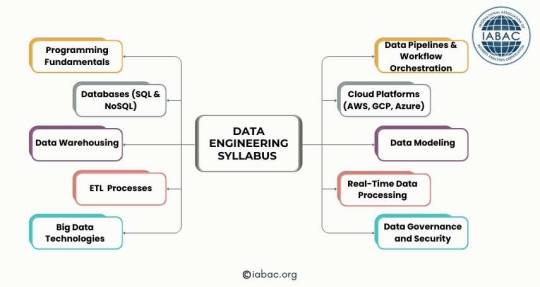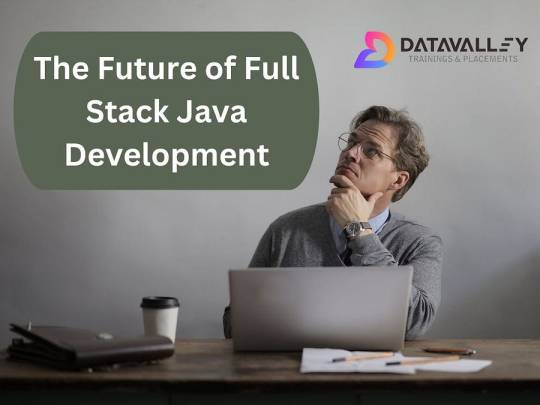#data engineering
Explore tagged Tumblr posts
Text
#ai model#artificial intelligence#technology#llm#sycophantic#language#linguistics#ai generated#science#datascience#data analytics#data engineering#ai trends#queries#neutral
30 notes
·
View notes
Text

absolutely unintelligeable meme I made during bootcamp lecture this morning
#coding#data engineering#transformers#starscream#star schema#data normalisation#so the lecture was on something called 'star schema' which is about denormalising some of your data#(normalising data is a data thing separate meaning from the general/social(?) use of the word#it has to do with how you're splitting up your database into different tables)#and our lecturers always try and come up with a joke/pun related to the day's subject for their zoom link message in slack#and our lecturer today was tryna come up with a transformer pun because there's a transformer called starscream (-> bc star schemas)#(cause apparently he's a transformers nerd)#but gave up in his message so I googled the character and found these to be the first two results on google images and I was like#this is a meme template if I've ever seen one and proceeded to make this meme after lecture#I'm a big fan of denormalisation both in the data sense and in the staying weird sense
24 notes
·
View notes
Text
FOB: I only think in the form of crunching numbers
Me, a Data Engineer: Is... is he talking about me... 🤓
FOB: In hotel rooms, collecting Page Six lovers
Me, a Data Engineer in a monogamous relationship: Ah, nvmd 🥴
#fall out boy#i know it is cringe but that is how i felt#millennial core#patrick stump#pete wentz#thnks fr th mmrs#data engineering#joe trohman#andy hurley#fall out boy shitposting
21 notes
·
View notes
Text
Data dose of the Day: Day 4:
🔹 Tip: Choose optimal partitioning strategies when working with big data (e.g., Parquet/Delta).
🔸 Why?: Right partitioning = faster reads, smaller scans. Partition by low-cardinality, query-relevant fields (like event_date or region).
2 notes
·
View notes
Text
Data Engineering Syllabus | IABAC
This image displays a syllabus for data engineering. Big data, cloud platforms, databases, data warehousing, ETL, programming, data pipelines, data modeling, real-time processing, and data security are some of the subjects covered. These subjects are key for developing data engineering skills. https://iabac.org/blog/what-is-the-syllabus-for-data-engineering

1 note
·
View note
Text
🚀 Exploring Kafka: Scenario-Based Questions 📊
Dear community, As Kafka continues to shape modern data architectures, it's crucial for professionals to delve into scenario-based questions to deepen their understanding and application. Whether you're a seasoned Kafka developer or just starting out, here are some key scenarios to ponder: 1️⃣ **Scaling Challenges**: How would you design a Kafka cluster to handle a sudden surge in incoming data without compromising latency? 2️⃣ **Fault Tolerance**: Describe the steps you would take to ensure high availability in a Kafka setup, considering both hardware and software failures. 3️⃣ **Performance Tuning**: What metrics would you monitor to optimize Kafka producer and consumer performance in a high-throughput environment? 4️⃣ **Security Measures**: How do you secure Kafka clusters against unauthorized access and data breaches? What are some best practices? 5️⃣ **Integration with Ecosystem**: Discuss a real-world scenario where Kafka is integrated with other technologies like Spark, Hadoop, or Elasticsearch. What challenges did you face and how did you overcome them? Follow : https://algo2ace.com/kafka-stream-scenario-based-interview-questions/
#Kafka #BigData #DataEngineering #TechQuestions #ApacheKafka #BigData #Interview
2 notes
·
View notes
Text
From Support to Data Science and Analytics: My Journey at Automattic
“Is it possible to transform a role in customer support into a data science career?” This question, which once seemed like a distant dream, became my career blueprint at Automattic. My journey from a Happiness Engineer in September 2014 to a data wrangler today is a tale of continuous evolution, learning, and adaptation. Starting in the dynamic world of customer support with team “Hermes” (an…

View On WordPress
5 notes
·
View notes
Text
Navigating the Data Landscape: A Deep Dive into ScholarNest's Corporate Training

In the ever-evolving realm of data, mastering the intricacies of data engineering and PySpark is paramount for professionals seeking a competitive edge. ScholarNest's Corporate Training offers an immersive experience, providing a deep dive into the dynamic world of data engineering and PySpark.
Unlocking Data Engineering Excellence
Embark on a journey to become a proficient data engineer with ScholarNest's specialized courses. Our Data Engineering Certification program is meticulously crafted to equip you with the skills needed to design, build, and maintain scalable data systems. From understanding data architecture to implementing robust solutions, our curriculum covers the entire spectrum of data engineering.
Pioneering PySpark Proficiency
Navigate the complexities of data processing with PySpark, a powerful Apache Spark library. ScholarNest's PySpark course, hailed as one of the best online, caters to both beginners and advanced learners. Explore the full potential of PySpark through hands-on projects, gaining practical insights that can be applied directly in real-world scenarios.
Azure Databricks Mastery
As part of our commitment to offering the best, our courses delve into Azure Databricks learning. Azure Databricks, seamlessly integrated with Azure services, is a pivotal tool in the modern data landscape. ScholarNest ensures that you not only understand its functionalities but also leverage it effectively to solve complex data challenges.
Tailored for Corporate Success
ScholarNest's Corporate Training goes beyond generic courses. We tailor our programs to meet the specific needs of corporate environments, ensuring that the skills acquired align with industry demands. Whether you are aiming for data engineering excellence or mastering PySpark, our courses provide a roadmap for success.
Why Choose ScholarNest?
Best PySpark Course Online: Our PySpark courses are recognized for their quality and depth.
Expert Instructors: Learn from industry professionals with hands-on experience.
Comprehensive Curriculum: Covering everything from fundamentals to advanced techniques.
Real-world Application: Practical projects and case studies for hands-on experience.
Flexibility: Choose courses that suit your level, from beginner to advanced.
Navigate the data landscape with confidence through ScholarNest's Corporate Training. Enrol now to embark on a learning journey that not only enhances your skills but also propels your career forward in the rapidly evolving field of data engineering and PySpark.
#data engineering#pyspark#databricks#azure data engineer training#apache spark#databricks cloud#big data#dataanalytics#data engineer#pyspark course#databricks course training#pyspark training
3 notes
·
View notes
Text
Data Engineering tip Day 22: Automate Metadata Collection
🔹 Tip: Automatically capture and store metadata (e.g., column types, null percentages, row counts) as part of your pipeline.
🔸 Why?: Metadata enables better governance, profiling, and debugging. Tools: OpenMetadata, Amundsen, DataHub, Databricks Unity Catalog.
0 notes
Text
What Are Data Engineering Solutions and How Do They Empower Businesses?

In the digital age, data has become the backbone of decision-making, innovation, and business growth. However, raw data in itself holds limited value unless it’s structured, processed, and made accessible. This is where data engineering solutions come into play.
If your organization is looking to build scalable, efficient, and reliable data infrastructure, understanding data engineering is crucial. In this article, we explore what data engineering solutions are, why they matter, and how they can transform your business operations.
What Are Data Engineering Solutions?
Data engineering solutions refer to the tools, processes, and techniques used to design, build, and maintain the systems that collect, store, and process data. These solutions focus on data architecture, pipelines, data quality, and integration to ensure that raw data is transformed into structured formats suitable for analytics and decision-making.
In essence, data engineering is the foundation that enables data science, business intelligence, and machine learning to function effectively.
Core Components of Data Engineering Solutions
1. Data Pipelines
Automated workflows that extract data from various sources, transform it into usable formats (ETL/ELT), and load it into databases, data lakes, or warehouses.
2. Data Integration
Combining data from multiple systems (CRMs, IoT devices, ERPs, APIs) into a unified platform for analysis and reporting.
3. Data Storage Architecture
Designing systems that store structured, semi-structured, and unstructured data reliably and securely — whether in the cloud or on-premise.
4. Data Governance & Quality Management
Ensuring data is accurate, consistent, and compliant with regulations through monitoring, validation, and governance policies.
5. Scalability & Performance Optimization
Building systems that can handle increasing volumes of data and user demands without performance bottlenecks.
How Do Data Engineering Solutions Empower Businesses?
1. Enables Real-Time Decision Making
With efficient data pipelines, businesses can access and analyze real-time data, allowing for quicker responses to market changes and customer behaviors.
2. Improves Data Accuracy and Reliability
Data engineering ensures high data quality, eliminating errors, duplicates, and inconsistencies. This builds trust in analytics and reporting.
3. Supports Advanced Analytics and AI
Well-structured data is the fuel for AI and machine learning. Data engineering enables these technologies by delivering clean, labeled, and timely data.
4. Drives Operational Efficiency
By automating data workflows, businesses save time and reduce manual errors, freeing teams to focus on high-value tasks.
5. Enhances Customer Experience
Personalized recommendations, dynamic pricing, targeted marketing — all depend on well-engineered data systems that track and respond to user behavior in real-time.
Real-World Use Case: Data Engineering in Action
A financial services company wants to offer personalized investment advice to its users. However, its customer data is scattered across multiple databases, some updated manually. After implementing data engineering solutions:
All data is integrated and refreshed in real-time.
Cleaned and transformed data feeds into machine learning models.
The company delivers personalized insights and recommendations through its app.
As a result, customer engagement soars, and the company gains a competitive edge.
Key Technologies Used in Data Engineering
Apache Spark & Hadoop – For large-scale data processing
Airflow & Prefect – For managing data workflows
Snowflake, BigQuery, Redshift – For modern cloud data warehousing
Kafka & Flink – For real-time data streaming
SQL, Python, Scala – Core programming languages for data engineers
When Should Your Business Invest in Data Engineering?
You should consider data engineering solutions if your business is:
Struggling with scattered or poor-quality data
Scaling rapidly and needs better data infrastructure
Planning to adopt machine learning or AI
Experiencing slow or unreliable reporting systems
Seeking to monetize or leverage big data assets
Final Thoughts
Data engineering solutions are no longer optional — they’re essential. In a world overflowing with data, the businesses that succeed are those that can harness it efficiently. Whether you're a startup or a global enterprise, investing in robust data engineering will streamline your operations, enable smarter decisions, and future-proof your organization.
0 notes
Text
The Role of Data in Shaping Tech Careers: A 2025 Good Outlook
Why Data Skills Are the New Tech Currency By 2025, 87% of tech roles will require data literacy as a core competency (Gartner 2024). What was once a specialized skill is now the across every domain — from cybersecurity to game development. This comprehensive 2,200-word guide reveals how data fluency is reshaping: Career advancement pathways Compensation structures Industry power dynamics 1. The…
0 notes
Text
Breaking Down Data Silos: Why Unified Data Is the Secret to Smarter Enterprises
In today’s digital economy, enterprises aren’t struggling from a lack of data—they’re struggling from fragmented data. Most organizations are sitting on goldmines of information, but it’s locked away in silos across departments like sales, marketing, finance, and operations. These invisible walls not only slow down innovation but also make collaboration harder and decision-making riskier.
The real problem with data silos? They create multiple versions of the truth. Sales might have one view of the customer, while marketing has another. Finance may track revenue differently from operations. This misalignment leads to confusion, redundant work, delayed insights, and missed opportunities. Even worse, it makes it nearly impossible to implement effective AI or real-time analytics.
But the challenge goes beyond technology. Data silos affect people, too. When teams don’t have shared access to accurate, up-to-date data, trust erodes. Analysts spend more time reconciling reports than finding insights. Departments struggle to collaborate because their systems don’t speak the same language. Executives hesitate to act because dashboards tell conflicting stories.
The good news? Breaking down data silos is achievable—and the payoff is big.
A structured approach starts with unified data access, where all key systems—CRM, ERP, marketing platforms, supply chain tools—are integrated through a centralized architecture. It’s not about moving all the data to one place, but ensuring it flows smoothly and consistently across systems.
Enterprises also need to modernize their data architecture. Legacy systems are rigid and slow. In contrast, cloud-native, modular platforms support scalable, secure, and real-time data operations. This means the infrastructure evolves with the business, not against it.
And governance? It has to be built-in, not bolted on. With automated data governance, organizations can maintain compliance, track data lineage, and protect sensitive information without slowing down teams. Real-time processing becomes possible through event-driven data flows, which ensure insights reflect what’s happening now—not what happened yesterday.
Want to dive deeper into how enterprises are dismantling data silos and enabling smarter operations? Check out the full blog here
1 note
·
View note
Text
How Data Engineers Are Strengthening Modern Data Security
Learn how data engineers protect sensitive data in today’s digital world. Discover the skills you need with expert-led data engineering courses from AVD Group.
#online data engineering certification#online data engineering#data engineering certification#Data Engineering
0 notes
Text
The Future of Full Stack Java Development

Full-stack developers, also known as “jack of all trades,” are in high demand in India. They are capable of carrying out the duties of numerous professionals. They earn good money and have many job opportunities with rewarding experiences because of their diverse skills. Full-stack Java programming has a bright future because its popularity is growing and will continue to grow in the coming years.
It’s well known that full-stack developers are proficient in both server-side and client-side programming. They are the professionals who carry out the responsibilities of backend and frontend developers. Despite not always being regarded as specialists, their abilities enable them to handle development tasks with ease. All firms look forward to having a brilliant full-stack developer as a future developer for a number of reasons. They handle a variety of technologies, which enables them to manage more project facets than the typical coder.
An experienced web developer who primarily works with Java programming is known as a Java full-stack developer. The front end, back end, and database layer are the three levels of code that these web developers build. The web development teams are frequently led by full-stack Java engineers, who also assist in updating and designing new websites. Because there is a great demand for Java full-stack developers. Many institutions have seized the opportunity by providing well-thought-out Java full-stack developer courses. You may study full-stack development quickly and become an expert in the area with the aid of these courses.
Java Full Stack Development by Datavalley
100% Placement Assistance
Duration: 3 Months (500+ hours)
Mode: Online/Offline
Let’s look into the future opportunities for full-stack Java professionals in India.
4 things that will Expand the Future Purpose of Java Full-Stack Developers
The Role of a Full-Stack Developer
Full-stack developers work on numerous tasks at once. They need to be extremely talented and knowledgeable in both front-end and back-end programming languages for this. JavaScript, CSS, HTML, and other frontend programming languages are essential. When creating new websites or modifying old ones, Java is a key programming language used by Java full-stack developers. However, backend programming languages consist of .Net, PHP, and Python depending on the projects. The full stack developers are distinguished from other developers by their proficiency and understanding of programming languages. With the availability of the finest Java full stack developer training, students may now easily master a frontend programming language like Java. The full-stack developer is more valuable and in demand when they are knowledgeable in multiple programming languages.
Responsibilities of a Full-Stack Developer
Functional databases are developed by full-stack developers. It creates aesthetically pleasing frontend designs that improve user experience and support the backend. The entire web-to-web architecture is under the control of these full-stack developers. They are also in charge of consistently maintaining and updating the software as needed. The full-stack developers bear the responsibility of overseeing a software project from its inception to its finalized product.
In the end, these full-stack developers also satisfy client and technical needs. Therefore, having a single, adaptable person do many tasks puts them in high demand and increases their potential for success in the technology field. Through extensively developed modules that expand their future scope, the Java full-stack developer course equips students with the skills necessary to take on these tasks.
The full-stack developer salary range
Full-stack developers are among the highest-paid workers in the software industry. In India, the average salary for a full-stack developer is 9.5 lakhs per annum. The elements that determine income typically include experience, location of the position, company strength, and other considerations. A highly skilled and adaptable full-stack developer makes between 16 and 20 lakhs per annum. Full-stack engineers get paid a lot because of their extensive skills, they can handle the tasks of two or three other developers at once.
By fostering the growth of small teams, preventing misunderstandings, and cutting the brand’s operating expenses, these full-stack developers perform remarkable work. Students who take the Java full-stack developer course are better equipped to become versatile full-stack developers, which will increase their demand currently as well as in the future in the industry.
Job Opportunities of Java Full Stack Developers
The full-stack developers are knowledgeable professionals with a wide range of technological skills. These competent workers are conversant with numerous stacks, including MEAN and LAMP, and are capable of handling more tasks than a typical developer. They are skilled experts with a wealth of opportunities due to their extensive understanding of several programming languages.
Full-stack developers are in high demand because they can work on a variety of projects and meet the needs of many companies. The full-stack Java developer course helps students build this adaptability so they can eventually become the first choice for brands searching for high-end developers.
As a result, these are a few key factors improving the future prospects of Java Full Stack developers in India. They are vibrant professionals who are in high demand due to their diverse skill set and experience, and they are growing steadily. The Java full stack developer course can help students hone their knowledge and abilities to succeed in this industry.
Datavalley’s Full Stack Java Developer course can help you start a promising career in full stack development. Enroll today to gain the expertise and knowledge you need to succeed.
Attend Free Bootcamps
Looking to supercharge your Java skills and become a full-stack Java developer? Look no further than Datavalley’s Java Full Stack Developer bootcamp. This is your chance to take your career to the next level by enhancing your expertise.
Key points about Bootcamps:
It is completely free, and there is no obligation to complete the entire course.
20 hours total, two hours daily for two weeks.
Gain hands-on experience with tools and projects.
Explore and decide if the field or career is right for you.
Complete a mini-project.
Earn a certificate to show on your profile.
No commitment is required after bootcamp.
Take another bootcamp if you are unsure about your track.

#dataexperts#datavalley#data engineering#data analytics#dataexcellence#business intelligence#data science#power bi#data analytics course#data science course#java developers#java full stack bootcamp#java full stack training#java full stack course#java full stack developer
2 notes
·
View notes
Text
Turn Your Data into Business with Data Engineering Services in USA
Your business collects data every day—but is it really helping you grow? Oak Tree Software helps you make sense of it all. From organizing your data to building smart dashboards and uncovering hidden insights, their data engineering and business intelligence services are designed to help real businesses solve real problems. If you're ready to stop guessing and start making data-driven decisions, take a look at their services for data engineering services in the USA.

#data engineering#data engineering services#business intelligence#data analytics#USA tech companies#data-driven decisions#Oak Tree Software#data solutions#big data services#smart dashboards#business growth#enterprise data#BI tools#data visualization#data management
0 notes
